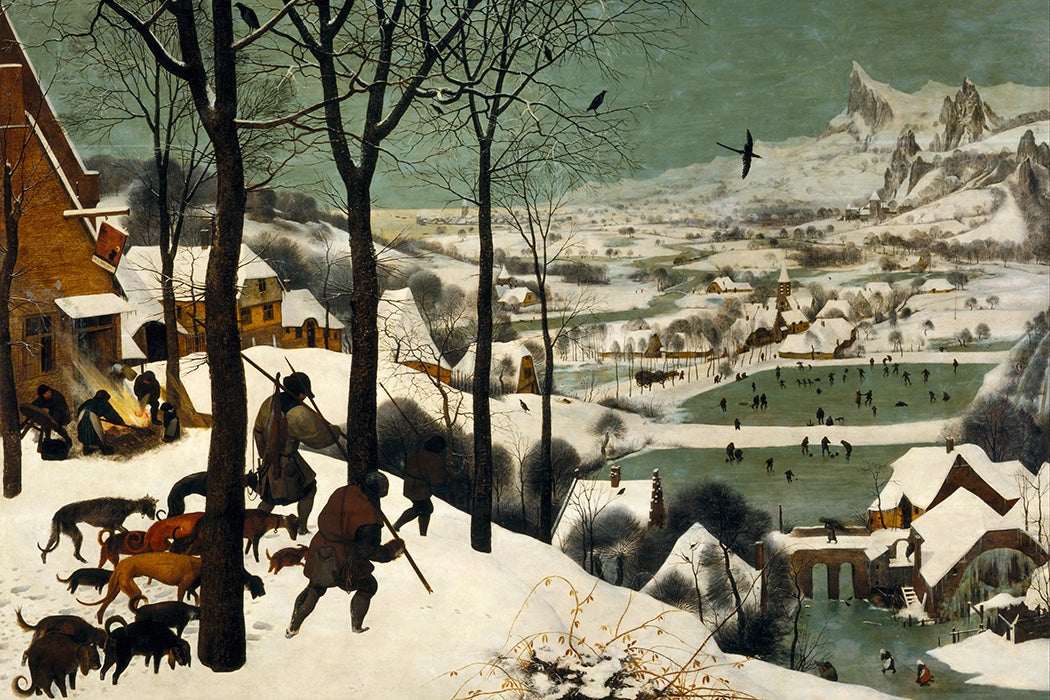Regarding the genre, as the great Bill Watterson put it:

From JSTOR Daily, December 6:
Low Country artists of the late Renaissance and Early Baroque eras captured the happiness and hardships of snowy winters—an ever rarer phenomenon now.

When British colonists arrived in New England in the early seventeenth century, they were welcomed by an increasingly extreme and unpredictable climate. August 1635 saw a hurricane so powerful that signs of its destructiveness would, according to William Bradford, the Governor of Plymouth Colony, remain visible for the next one hundred years. The summer of 1637 was so hot several people died, and John Winthrop, the Governor of Massachusetts Bay resorted to traveling at nighttime. The following spring, by contrast, was so cold that harvests failed. Worst of all was the winter of 1641-1642; in his journal, Winthrop noted that “the frost was so great and continual this winter that all the Bay was frozen over, so much and so long, as the like, by the Indians’ relation, had not been so these forty years…”Nowadays these meteorological anomalies are often cited as manifestations of the so-called Little Ice Age or LIA, a period of slight yet significant global cooling that lasted from circa 1300 to 1850. Researchers say a sudden spike in volcanic eruptions, combined with a prolonged reduction in solar activity, caused temperatures to drop by as much as 3.6 degrees Fahrenheit. Auroras became rare, coronas disappeared from memory, and reports of “dust veils” hovering over the Northern Hemisphere describe the sun as looking a pale red.Bruegel’s subjects are often perceived as dejected, and for good reason as the extreme cold took its toll. In 1564, the rivers Scheldt and Maas froze, halting the transportation of goods and causing food supplies to run out.Consequences of the LIA were felt across the globe, from South America to East Asia. However, Northern Europe appears to have been particularly affected. Scandinavia, already one of the coldest places on Earth, experienced one of its coldest winters in 1641-1642. Between 1640 and 1644, creeping glaciers swallowed up entire farmsteads in the Alps. By August, “there was such a great cold we almost froze to death on our quarters,” a soldier in central Germany wrote in his diary in 1640. “On the road, three people did freeze to death: a cavalryman, a woman, and a boy.”
Some of the most vivid accounts of life during the Little Ice Age survive in the unlikely form of landscape paintings from Belgium and the Netherlands. One prime example is the genre-defying “Hunters in the Snow” from 1565 by the Flemish artist Pieter Bruegel the Elder, which depicts three armed men and a dozen dogs trudging downhill towards a snow-covered township....
....MUCH MORE